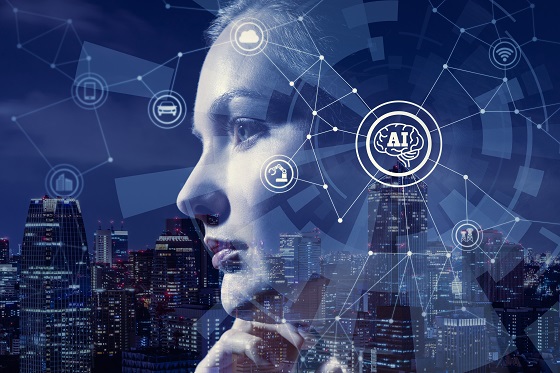
AI(Artificial Intelligence) concept.
By Nick Thiong’o
In an age where creativity can be summoned with a keystroke and distributed at the speed of light, the music industry stands on the cusp of its most radical reinvention yet — one not driven by guitars or genres, but by generative code. The old muse, once flesh and blood, now hums with electricity. And the results are both thrilling and unsettling.
Artificial intelligence, that once-silent partner in digital production, is stepping confidently into the studio — not just as an assistant, but increasingly as a collaborator, composer, and, in some cases, performer. The implications for artistry, economics, and ethics are profound.
Nowhere is this more apparent than in the explosive rise of AI-powered platforms like Suno and Udio, which allow users to generate entire songs — lyrics, vocals, and instrumentals — from a single text prompt. In minutes, an idea becomes a track. A teenager in Nairobi or Manchester can now command the equivalent of a professional studio, virtual band, and sound engineer from their laptop. The barriers to entry haven’t just lowered — they’ve evaporated.
Yet this is no passing trend. Consider AIVA (Artificial Intelligence Virtual Artist), a platform designed not for pop bangers, but for composing emotive, cinematic scores. AIVA analyses centuries of classical music to generate symphonies, waltzes, and soundtracks that would make Eric Wanaina raise an eyebrow. It’s already being used in film, advertising, and gaming — industries hungry for affordable, mood-rich music on demand.
Then there’s MusicFX by Google, an experimental tool allowing users to generate instrumental music using simple text inputs. Its real innovation lies not just in producing pleasant loops, but in providing fine-tuned control over duration, looping, and style — a sign of how AI is becoming more responsive to artistic nuance, not merely functional output.
Together, these tools are reconfiguring what it means to create. For many young musicians, the studio is no longer a place — it’s an interface. The DAW (Digital Audio Workstation) still holds ground, but increasingly, producers are turning to AI for beat ideation, vocal synthesis, chord progressions, and even marketing advice. Whether through Soundraw, Boomy, or Amper, AI is present at every stage of the pipeline — from the spark of creativity to the final mix.
Even in the British music scene — long defined by cultural grit and genre-defining rebellion — AI is finding its rhythm. Bedroom producers are blending pop music with AI-generated orchestras. Ambient artists are feeding neural networks with field recordings. Labels are using data analytics to forecast trends and Artist & Repertoire reps now watch TikTok and AI dashboards with equal attention.
But for every breakthrough, there’s a moral counterpoint.
Who owns the output of AI? Is a song generated by AIVA truly yours if you didn’t pen the melody or record the vocals? Does MusicFX dilute the authenticity of musical performance or expand the palette of sonic possibility? And when algorithms start to learn from copyrighted music — as they inevitably do — are they creating, copying, or stealing?
The courts have yet to catch up. In the meantime, creators are left to navigate an ethical grey area, where inspiration, imitation, and innovation collide. It’s a landscape that echoes the early days of sampling — only now, the sample is the world’s entire musical history, processed and recombined in milliseconds.
Yet amid the disruption, there is promise. AI is empowering disabled musicians, allowing them to create through speech, gesture, or code. It’s enabling the creation of hyper-personalised music therapy. And it’s giving unheard voices — in regions without access to formal training or equipment — a megaphone to the world.
AI is not replacing musicians. It is replacing monotony. It is automating the generic, the formulaic, the 300th trap beat with identical hi-hats. It challenges us not by stealing creativity, but by demanding more of it. In this new age, originality must be louder. More daring. More human.
The soul of music still belongs to the people — the creators and the listeners. AI may write in key, but it cannot write from heartbreak. It may master dynamics, but it cannot master feeling. The great songs still need flaws, tension, story — elements no algorithm can yet convincingly fake.
As we continue this great sonic experiment, we must remember: the tools have changed, but the mission has not. Music is still about connection — about making others feel what you feel. Whether strummed on strings or summoned by prompts, that essence remains untouched.
The revolution is here. The machines are in the studio. But the beat — at least for now — is still ours to set. I still believe the future sounds best when humanity holds the mic — even if AI is adjusting the reverb.
Nick Thiong’o is the Executive Director of www.concept-vault.com, a creative technology hub exploring the future of storytelling, music and digital innovation across Africa and beyond.









